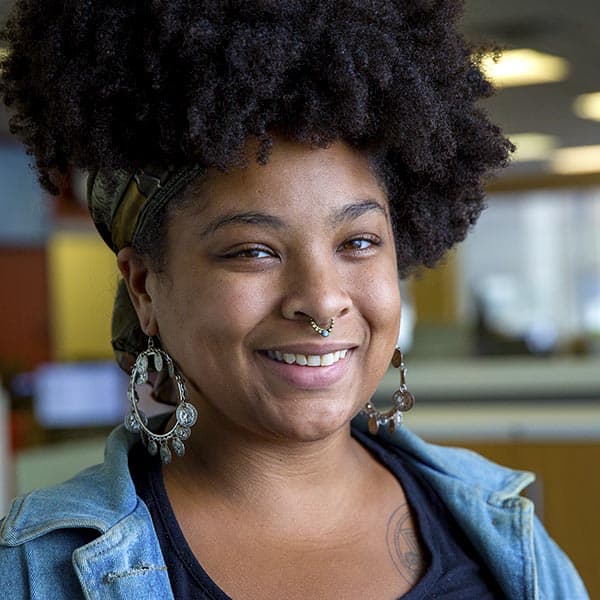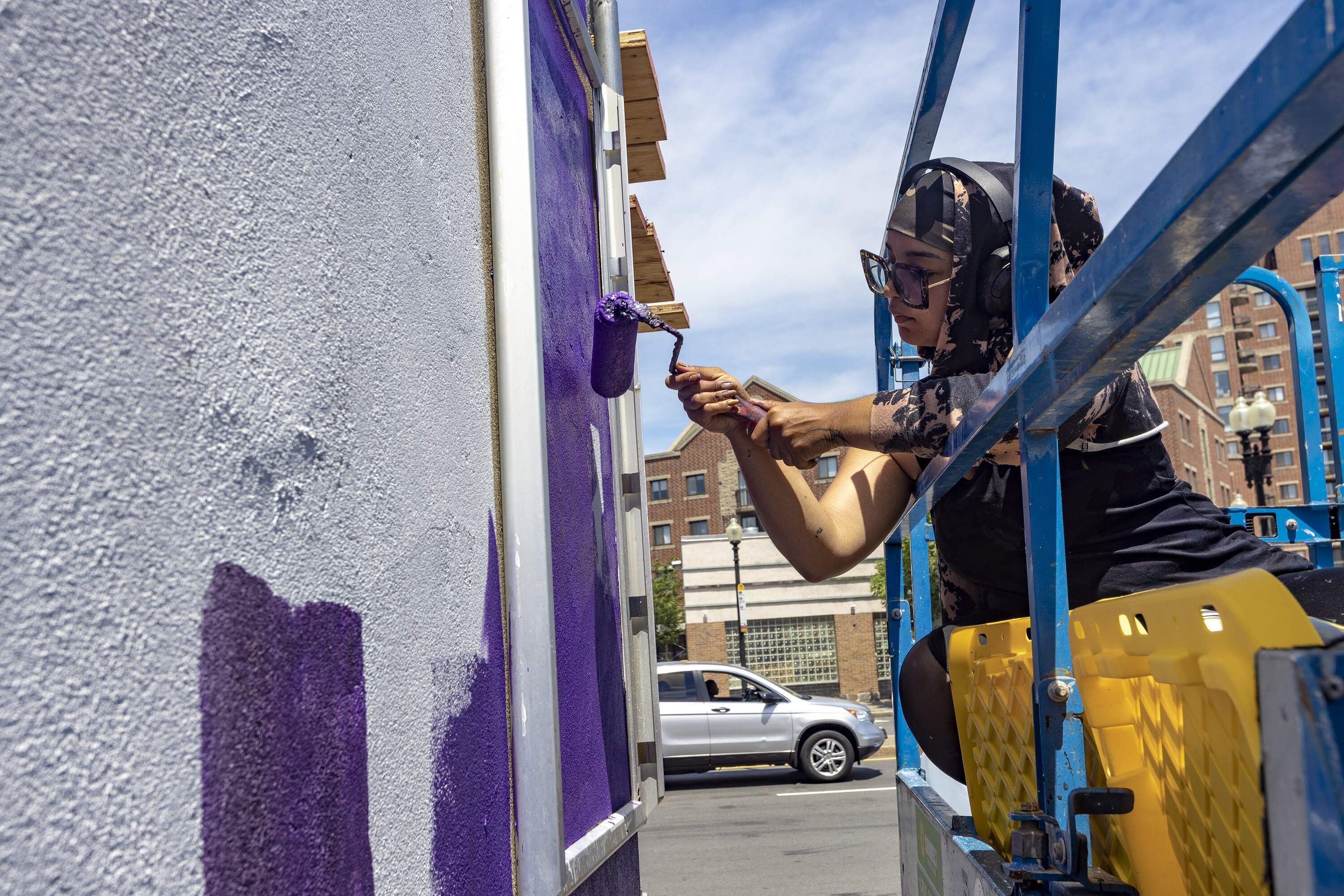
Rixy uses spray paint to create her own world and make space in this one
The story of Highland Avenue in Roxbury is complicated. On one end, there are shiny, modular developments and housing, the result of the ongoing gentrification happening in Jackson Square. From there, Highland curves through the neighborhood, winding past older triple- and double-decker houses that many longtime residents of color still call home.
This is the street where artist Rixy grew up. It's also where her mural, “Pa*Lante,” spans the side of a two-story home. In the mural, a brown-skinned woman stands front and center, tattooed thighs peeking out from behind the slits of a blue dress. A brown dog with pointed ears crouches behind her, both a protector and companion. Undulating above them is a flag bearing the word "Cúcala."
"To be able to paint in my childhood neighborhood, that, for me, was amazing," said Rixy, who completed the mural in October 2022 while participating in Now + There's accelerator program for artists. "'Pa*Lante' means 'moving forward.' I think after COVID and all the BLM movements, it made me want to be a social practitioner ... At this point, I was like, 'I want to make this for many people.' "
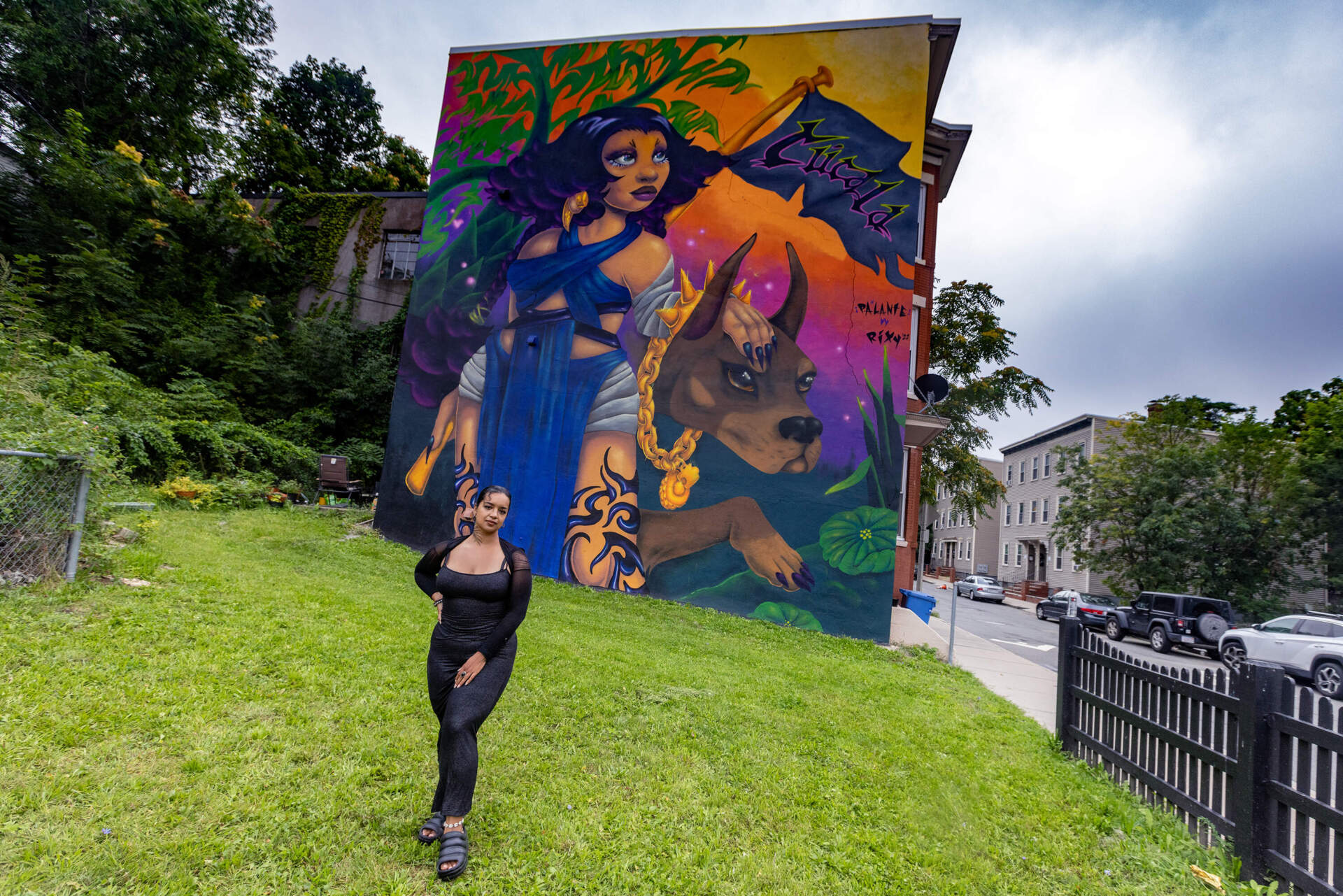
Rixy's murals, often depicting voluptuous brown-skinned characters, are a reflection of the diversity she sees and loves so much in the city. For her, murals are more than images splashed onto walls. They're an opportunity to visually push back against gentrification and imbue neighborhoods with a sense of belonging, especially for residents of color.
"In a place like Boston, we often feel like we're getting dislocated or removed from our homes," Rixy said. "So painting in these areas again is [saying], 'This is still ours. We were here.'"
Making a place for oneself is something Rixy is intimately familiar with. Growing up, she loved to draw but once she got to college at UMASS, the message was "art is not a career choice," she recalled.
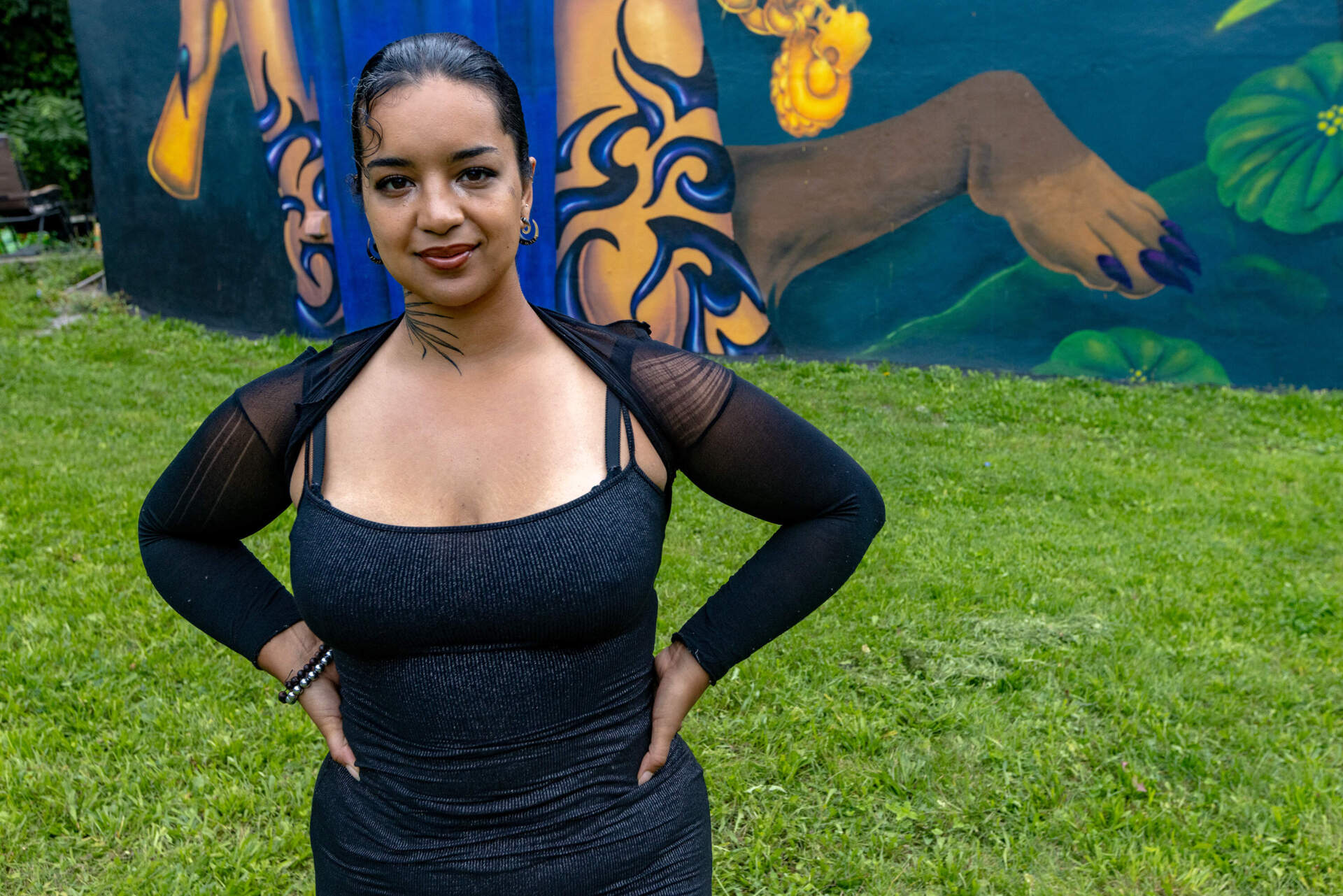
During her junior year, Rixy created a chandelier mimicking the look of hanging breasts for a class project. She created the piece as a commentary on femininity and the cultural meaning attached to breasts. When Lesley University invited Rixy to show the chandelier at a local art show, she knew that art was as viable a career choice as any other. "After that, I was like, I want to keep doing this," she says. "And that was traction for me to keep doing more, and helped me notice the community of artists in Boston."
Since those years as an undergrad, Rixy has done a bit of everything, from sculpture to painting to arts education. She eventually took her paintings and drawings from sketchpads and canvases to the sides of buildings, creating large-scale murals across Boston and beyond. Many of the characters showcased in her murals hail from the same fictional world, Cúcala, a fluorescent alternate reality that has some stark differences from our own.
"I think about Cúcala as the world my art lives in," Rixy explained. " 'Cucula' is a word used in some Spanish songs, kind of like, 'Eff it. Eureka. Wow.' It's this euphoric adjective. But I think about it as an inclusive space where the women are ... the warriors there. They're the builders. They're the makers."
Advertisement
In Cúcala, misogyny and machismo are the exceptions, not the rule. And many of the inhabitants of Cúcala upend Western beauty standards, proudly boasting curvy, fleshy bodies, unibrows, stretched earlobes and talons for nails. Through Cúcala, Rixy has created a figurative place where people of color, especially women of color, are able to identify with characters who look like them.
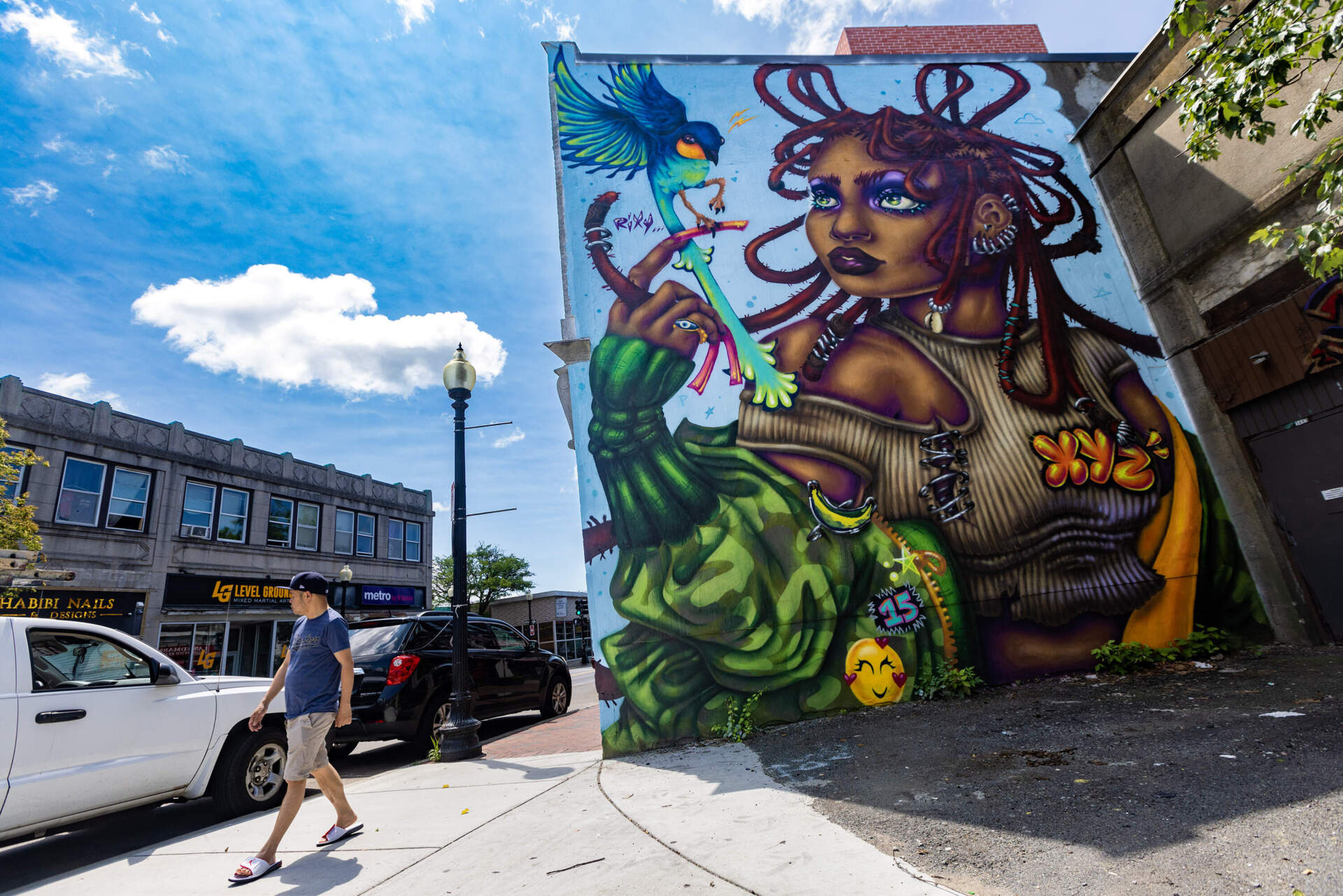
"I want the work to feel like you're allowed to go as far as you want," she said. "Be as big as you want, be as big of a woman as you want to be, as loud, as voluptuous, whatever you want."
Since “Pa*Lante” was completed, Rixy has continued to create work in the realm of Cúcala, with recent murals going up in Fields Corner and in Lawrence. Kate Gilbert, executive director of public art nonprofit Now + There, says Rixy’s work and the world of Cúcala help redefine how public art impacts local communities.
"So many of our civil liberties are under attack," Gilbert said. "What Rixy’s work does to put up images of fictional characters that are part of the Cúcala, reminds us of progress."
Rixy plans to continue exploring the landscape of Cúcala, incorporating sculpture and other 3D forms of art.
"But I think Cúcala has been the grounding of my social practice," Rixy said. "We, as community organizers and artists, especially in Boston, we have to be activists here, we have to be social pushers."
As she grows as an artist, Rixy hopes to create more spaces, both real and imaginary, where people of color can see themselves as the protagonists of their own epic stories.
